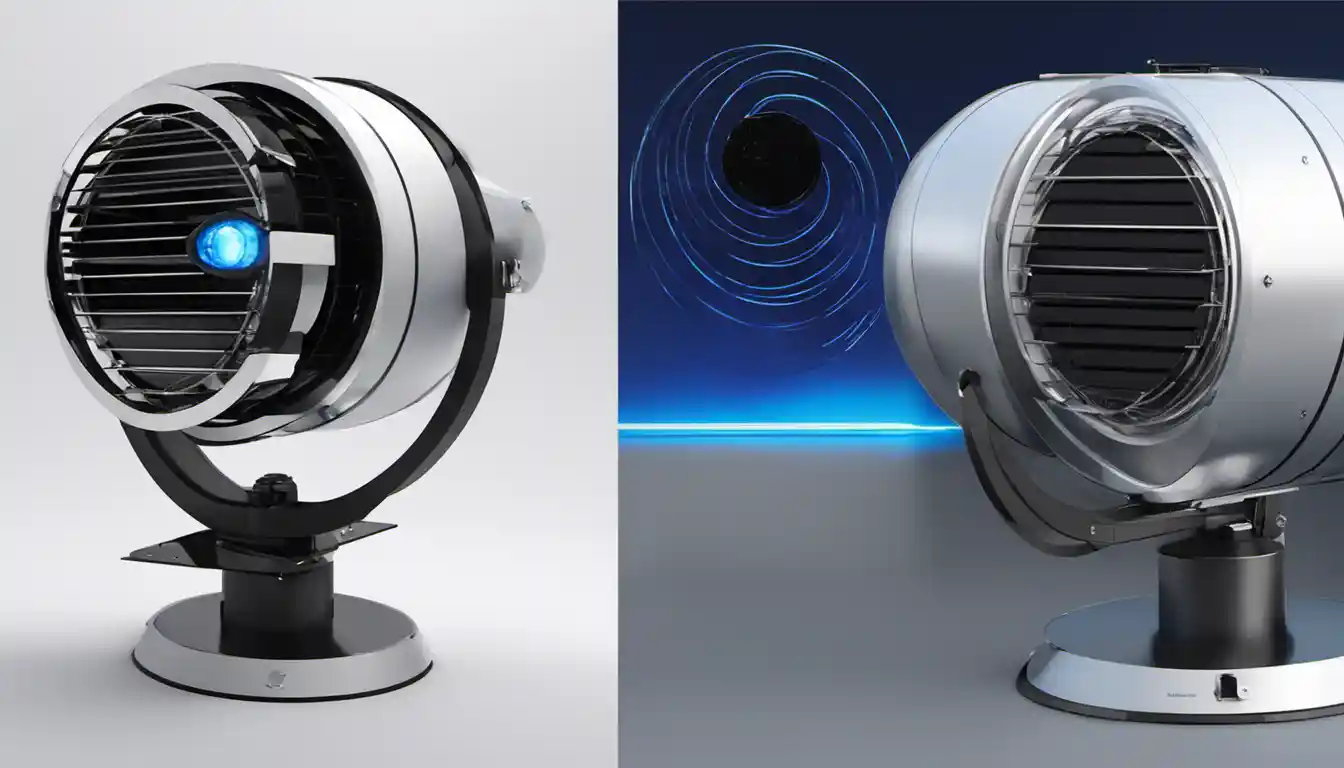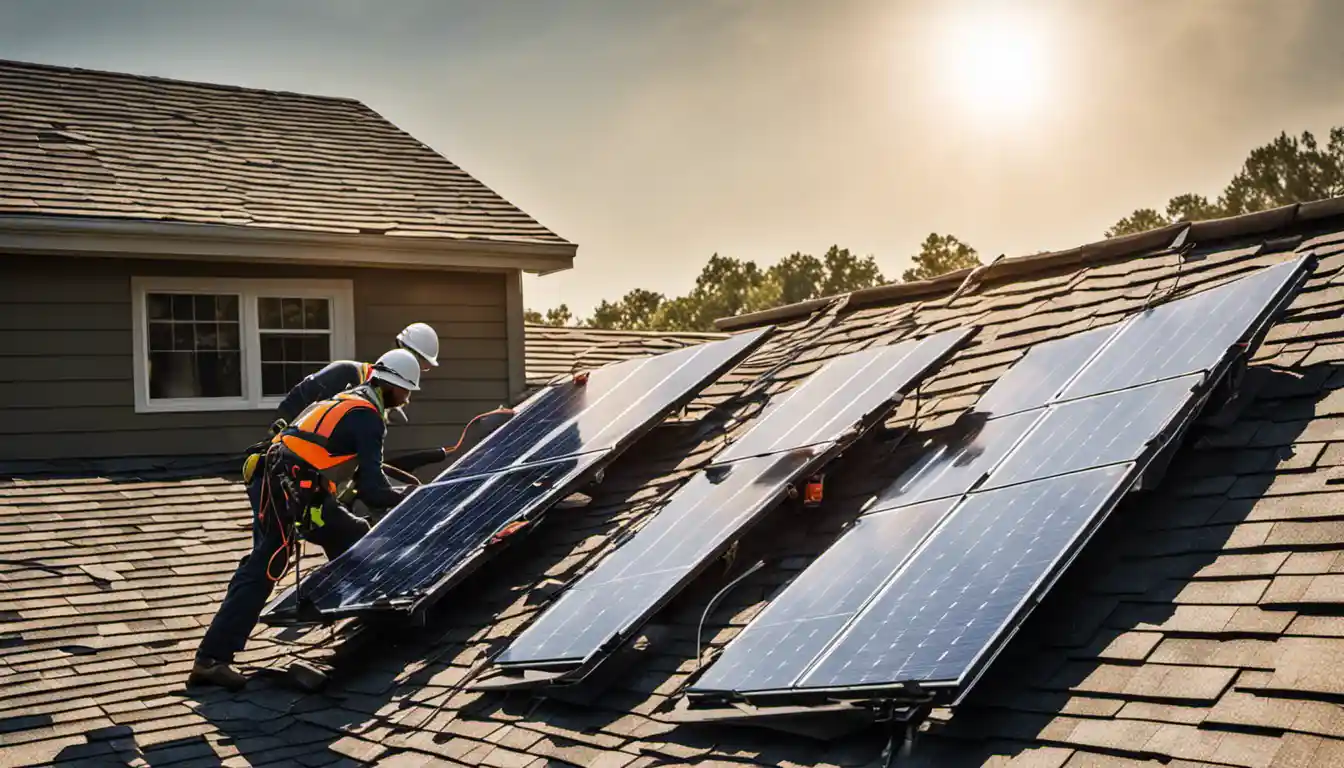Introduction
A solar vent and a whirlybird are two types of ventilation systems used primarily for roofs. A solar vent uses solar power to spin its fan and expel hot air, which makes it more energy-efficient and quieter than a whirlybird. On the other hand, a whirlybird, also known as a wind turbine vent, relies on wind power to rotate and vent air, which makes it more eco-friendly, but potentially less effective in low-wind areas.
What is a Solar Vent?
An innovation in the ventilation industry, a solar vent is a rooftop installation that employs solar energy to promote efficient air circulation. Solar vents have a small solar panel that powers an inbuilt fan, optimizing airflow by drawing hot air outside, while allowing fresh, cool air to come in. Not only do these vents offer a sustainable way of reducing indoor temperature, they also play a significant part in moisture regulation reducing the chances of mold and mildew.
What is a Whirlybird?
The Whirlybird, or wind turbine vent, is a longstanding staple in home ventilation that doesn’t require any external power. These devices are designed to freely spin with the wind; as they rotate, they create a vacuum effect to pull the heat out from your home. Their ability to offer constant passive ventilation, irrespective of their lack of power source, makes them a classic choice for many.
Part by Part Comparison of Solar Vent and Whirlybird

Cooling Capabilities
Both methods are effective for cooling your home, but they do so differently. A solar vent uses solar power to cool your attic space rapidly. It can move up to 10 times as much air as a typical whirlybird. On the other hand, the cooling capacity of a whirlybird directly depends on wind availability and speed. Without wind, its cooling capability is rather limited.
Power Requirements and Usage
Solar vents are powered by the sun, and as a result, their performance is optimal in sunny conditions but dipped during cloud cover or night. However, some advanced models come with battery storage for night time operation. On contrast, a whirlybird operates purely on wind power, providing ventilation as long as there is wind, but can be static in low wind conditions.
Installation Process

Installing a solar vent requires more planning, as the location must have good exposure to the sun. Installation may also require professional help due to the electrical aspects. In contrast, whirlybirds are relatively easy to install and can be placed almost anywhere on the roof.
The Need for Effective Roof Ventilation
Effective roof ventilation isn’t just about cooling; it plays a crucial role in the overall health of your home. It helps prevent moisture buildup, roof damage, reduces energy costs, and improves indoor air quality. Both solar vents and whirlybirds cater to this need in their unique ways.
Solar Vent vs Whirlybird: The Role In Airflow
A solar vent could move thousands of cubic feet of air per hour – provided there’s enough sunlight. This ability to vigorously circulate air is a definite advantage during hot summer days. Whirlybirds, while less aggressive in their action, provide a more steady and predictable airflow, as they aren’t as dependent on changing solar conditions.
The Impact on Aesthetics and Home Value

While both systems have their advantages, their aesthetic impact can’t be ignored. Solar vents have a more modern, sleek look and can add to the ‘green’, energy-saving appeal of a house. Whirlybirds, whilst less appealing, are usually less noticeable due to their smaller size and traditional appearance.
Maintenance: What Does Each Option Require?
Solar vents require minimal maintenance beyond the occasional cleaning of the solar panel. Whirlybirds are also low maintenance, but they may need oiling occasionally to keep the turbine running smoothly.
Which Is More Effective: Solar Roof Vent or Whirlybird?
The answer lies in your specific needs and local climate conditions. If you live in a sunny area and power efficiency is a priority, a solar vent may be best. If you live in a windy area where sunlight is inconsistent, a whirlybird might be more suitable. Both can be highly effective when professionally installed and properly maintained.
jump here for an in-depth exploration on the pros and cons of solar roof vents to further inform your decision.
Conclusion
Solar vents and whirlybirds both offer unique strengths, depending on your home’s geographical location, aesthetic preference, and energy efficiency goals, among others. As with all home improvement decisions, understanding your specific needs and circumstances is key to making the right choice between a solar vent and a whirlybird. After reading this comprehensive comparison, I trust you are well-informed to choose wisely.




1 thought on “Solar Vent vs Whirlybird: A Comprehensive Comparison for Homeowners”
Comments are closed.